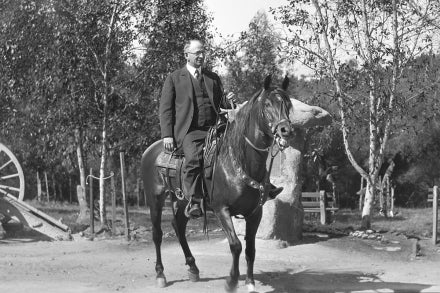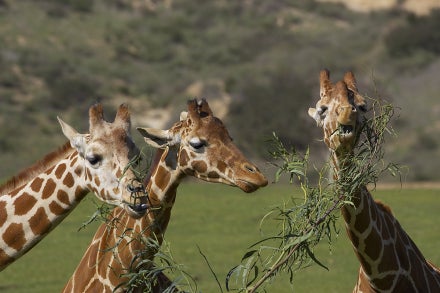
Close your eyes and imagine a head of cabbage on top of a miniature coconut tree trunk, and you’ll roughly envision the unusual and endangered ʻālula (AH-lou-lah) Brighamia insignis. Like 80 percent of all plants, the ʻālula depends on pollinators to survive, but there’s one big problem: its pollinator has gone extinct.

The ʻālula plant, also known as cabbage on a stick, is native to the Hawaiian islands.
When a species of hawk moth that was the only known pollinator of the ʻālula plant vanished, the ʻālula faced extinction. Fortunately, thanks to some extremely dedicated conservationists, this plant has a fighting chance.
By the 1970s, the ʻālula—or cabbage on a stick—population had severely dwindled in its native habitat, the sea cliffs of several Hawaiian Islands. Overgrazing by feral goats and pigs was a serious problem for the plant, as was competition from invasive non-native vegetation. The final straw was the extinction of this cliff-dweller’s only known pollinator.
When only a handful of ʻālula remained in cliffs on the islands of Kauaʻi and Niʻihau, a few brave botanists began rappelling down the steep terrain to hand-pollinate the last remaining plants. Later, they returned to collect the seeds in a hope-filled effort to propagate ʻālula with the help of botanical gardens around the world.

Botanists rappelled down steep terrains on the Hawaiian islands to collect ʻālula seeds. Pictured here botanists work with a related ʻālula species, Brighamia rockii, in a similar terrain. (Photo credit | Kenneth R. Wood, National Tropical Botanic Garden.)
San Diego Zoo Wildlife Alliance was among those selected to steward the ʻālula seedlings. Since then, our horticulture team has successfully propagated many plants from the seeds received.
Using a small paintbrush, horticulturalists collect pollen from each ʻālula plant’s fragrant yellow flowers. They can store the pollen for later use or pollinate other plants with it—helping the ʻālula continue to reproduce.

Historically, the ʻālula plant was pollinated by a species of hawk moth that is now extinct. Conservationists now hand-pollinate the plant to ensure its survival.
The ʻālula is a one-of-a-kind plant, and it is also a first-of-its-kind conservation story. While it is currently categorized as Extinct in the Wild on the International Union for Conservation of Nature Red List of Threatened Species, there is hope for its future. Through genetic research, we discovered that the ʻālula plants we care for had different genetic material from those found in other botanical gardens. This was great news!
For the benefit of this rare plant, we sent hand-collected pollen to the Chicago Botanic Garden to pollinate their plants and help increase the genetic diversity of the species. This collaboration involved building pedigrees, or genetic family trees, and carefully transporting pollen across the country. Today, over 250 ʻālula plants are cared for globally at over 52 institutions, thanks to both quick-thinking conservation action and long-term conservation efforts.

Efforts to conserve the ʻālula plant include growing seedlings in botanical gardens worldwide.
Building on the success of this species’ propagation plan in botanical gardens worldwide, Hawaiʻi’s National Tropical Botanic Garden, Chicago Botanic Garden, San Diego Zoo Wildlife Alliance, and other partners collaborated on a framework that can be used for other endangered plant species. By working together, scientists have a better chance of preventing extinctions, making sure species populations are diverse and can be reintroduced into native landscapes.
We’re honored to be part of the critical conservation effort to save this unique species and restore the ʻālula in its native habitat. We also recognize that natural pollinators are keystone species that help hold ecosystems together by supporting plant reproduction and diversity in their native landscapes. Habitat loss, pesticides, and non-native species are major threats to pollinators and put species like the ʻālula—and entire ecosystems—at risk.

ʻĀlula flowers are fragrant, often described as having a sweet, pleasant scent that becomes more pronounced in the evening.
Today, we continue to support ʻālula conservation in the hope that one day this plant will once again thrive in its native habitat on the windswept cliffs of the Hawaiian Islands.
Celebrate Pollinator Week (June 17–23) by planting native pollinator-friendly plants in your garden, eliminating the use of harmful pesticides, and contributing to community science efforts, like Journey North and Bumble Bee Watch, that help scientists create sustainable conservation solutions in your community and across the globe.
Discover more about what your support makes possible for Hawaiʻi’s endangered wildlife through our Pacific Islands Conservation Hub.




